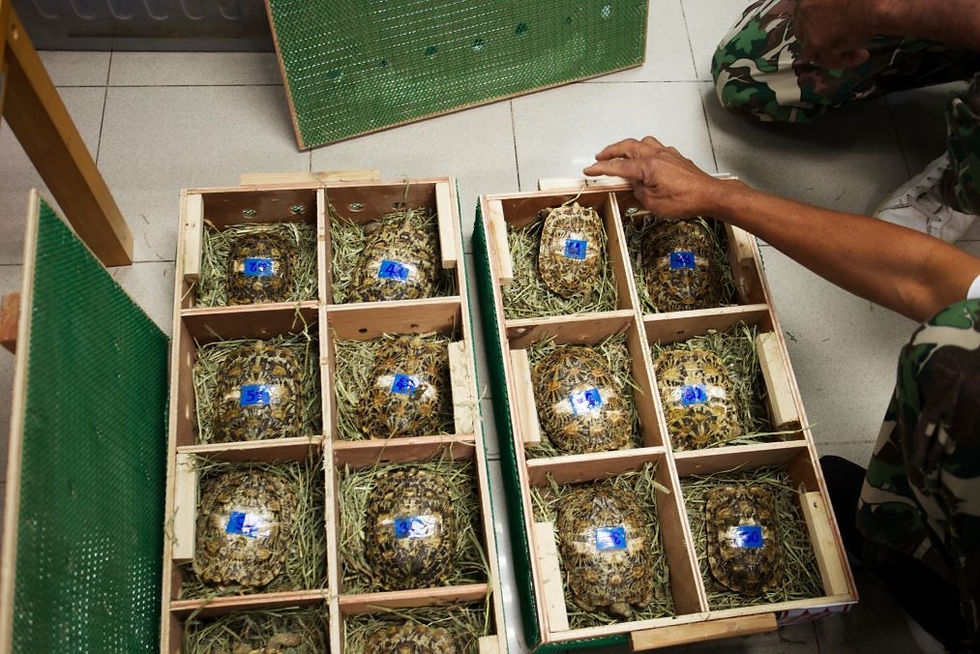Kenya's Battle to Control Invasive Indian Crows.
- Brenda Karimi
- Oct 20, 2024
- 3 min read
Updated: Apr 21
In coastal Kenya, the threat posed by the Indian house crow (Corvus splendens) has escalated into an environmental crisis.
Known locally as "kunguru" or "kurabu," these invasive birds have caused significant ecological damage, threatening native species and creating economic problems.
In response, the Kenyan government has launched an aggressive culling campaign to eliminate a million crows by the end of 2024.

Indian house crows, native to India and other parts of Asia, spread to various countries through shipping routes. In the 1890s, British authorities introduced these birds to Zanzibar to manage waste.
From there, they migrated to the Kenyan mainland, first appearing in the port city of Mombasa in the 1940s. Since then, the crows have thrived, mostly in urban areas where human populations and waste have grown.
These birds are highly adaptable and opportunistic, feeding on waste, small animals, and human food. They have no natural predators in Kenya, allowing their population to grow uncontrollably.
As the human population increased, so too did waste, creating the perfect breeding grounds for the birds.
Ecological Impact
The Indian house crow invasion poses a serious threat to Kenya’s biodiversity. These predators attack not only other birds but also small mammals and reptiles. Indigenous bird species like weavers and waxbills have greatly suffered, with nests being destroyed and chicks eaten.
There are also fears that the crows could invade Kenya's national parks and protected habitats, potentially causing irreversible damage to rare and endangered species. If left unchecked, the ecological imbalance caused by these invasive birds could devastate Kenya's natural heritage.
Human-Wildlife Conflict
Beyond their ecological impact, Indian house crows have become a daily nuisance for people living along the Kenyan coast.
Farmers report frequent attacks on their livestock, particularly poultry. The birds have developed aggressive behaviours, often stealing chicks in broad daylight and causing significant losses for poultry farmers.
The tourism industry has also been affected. Hotels in coastal areas have been forced to deal with crows raiding outdoor dining areas, stealing food from guests, and generally disrupting the tourist experience.
Despite efforts to scare the birds away with catapults or traps, the crows have proven highly intelligent, quickly learning to avoid these threats.
The Culling Strategy
To control the growing crow population, the Kenyan government has launched a culling operation, centred on poisoning the birds.
Following consultations with conservationists, community leaders, and stakeholders from the tourism and agricultural sectors, the Kenya Wildlife Service (KWS) concluded that poisoning is the most effective method.
The poison being used, Starlicide, is slow-acting and is designed to target crows without harming other species. The culling process involves pre-baiting; leaving meat at specific locations to attract large numbers of crows before the poison is introduced.
This method has already proven effective during previous trials, and authorities hope to significantly reduce the crow population through this approach.
However, this method raises ethical concerns. Experts argue that poisoning is inhumane and only offers a temporary solution. They advocate for more sustainable, non-lethal methods such as improved waste management and habitat control.
Reducing access to food sources, like open garbage dumps, could naturally reduce crow numbers without resorting to lethal measures.
While the culling campaign may provide short-term relief, it is clear that Kenya needs a long-term approach to deal with the Indian house crow problem.
Reducing waste, protecting native species, and involving local communities in conservation efforts will be critical in ensuring the country’s ecosystems can recover.
The fight against these invasive birds is far from over. Without swift action, the damage caused by the Indian house crow could become irreversible, threatening not just Kenya’s biodiversity, but its economy as well.
The future of Kenya’s wildlife, agriculture, and tourism depends on finding the right balance between effective control and ethical, sustainable solutions.



Comments